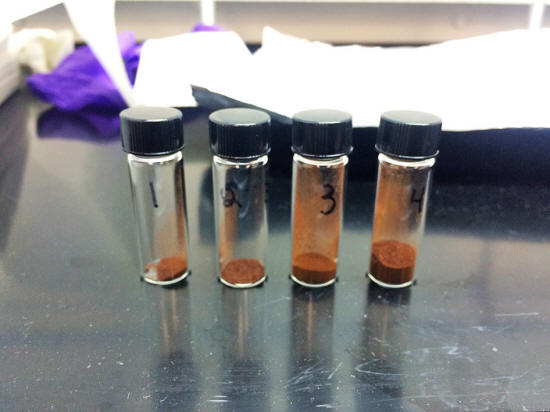|
from BigThink Website
- who first coined the term - was tempted to call them "star-tar"...
There was a long way to
go from jumbles of dead molecules to the complicated machinery of
life. Earth's
tenuous atmosphere didn't shield
the planet so well from cosmic radiation, making it difficult for
life to even get a foothold. There was no source of energy for food.
There are a lot of ideas about how this happened, but many of these involve a broad group of cosmically abundant goo called tholins.
Giving a name to these substances was necessary.
Although they can vary in form and content wildly, they all share similar physical and chemical properties, and they are all formed in a similar way.
Sagan - who really did have a way with words - also noted that he was,
and
Sarah Hörst, Johns Hopkins University
made at
Johns Hopkins University.
When irradiated, these
compounds undergo a chain reaction, producing reddish, gooey
tholins.
When they are produced in a celestial body's atmosphere, tholins like these form a red haze around the object, like Saturn's moon Titan.
They can also form when
frozen methane, ethane, or other organic compounds are irradiated,
which is why parts of Pluto and Europa appear red.
Why tholins matter
The red coloration is believed to be because of tholins.
NASA
But the various
properties of tholins make them a good candidate for how life
began, and they may serve as a marker for planets that may harbor
life in the future.
When they are formed in
the atmosphere, they produce a haze that helps block the planet from
the cosmic radiation that would rip apart the delicate machinery of
life (DNA or otherwise).
And, although Earth cannot naturally host tholins today, this was not always the case.
Oxygen only began appearing in Earth's atmosphere a little over 2 billion years ago during the Great Oxygenation Event. Before that, its earliest atmosphere was made of hydrogen, ammonia, and water vapor, all of which can be combined into tholins.
Some scientists have also
speculated that icy comets and interplanetary dust delivered early
Earth a payload of tholins.
She irradiated a series of compounds commonly found in Titan's atmosphere (specifically, N2, CH4, and CO) to produce tholins similar to those they would expect to find on Titan.
So, in addition to blocking radiation and serving as an energy source, tholins may even give rise to life in a more direct way. What's more, they are very common in our solar system and likely beyond.
In our stellar neighborhood alone, tholins are believed to be present on,
...and a variety of
comets and asteroids.
Tracking the presence and
nature of tholins on these planets may serve as excellent
clues into whether life exists and, if so, in what form.
|




